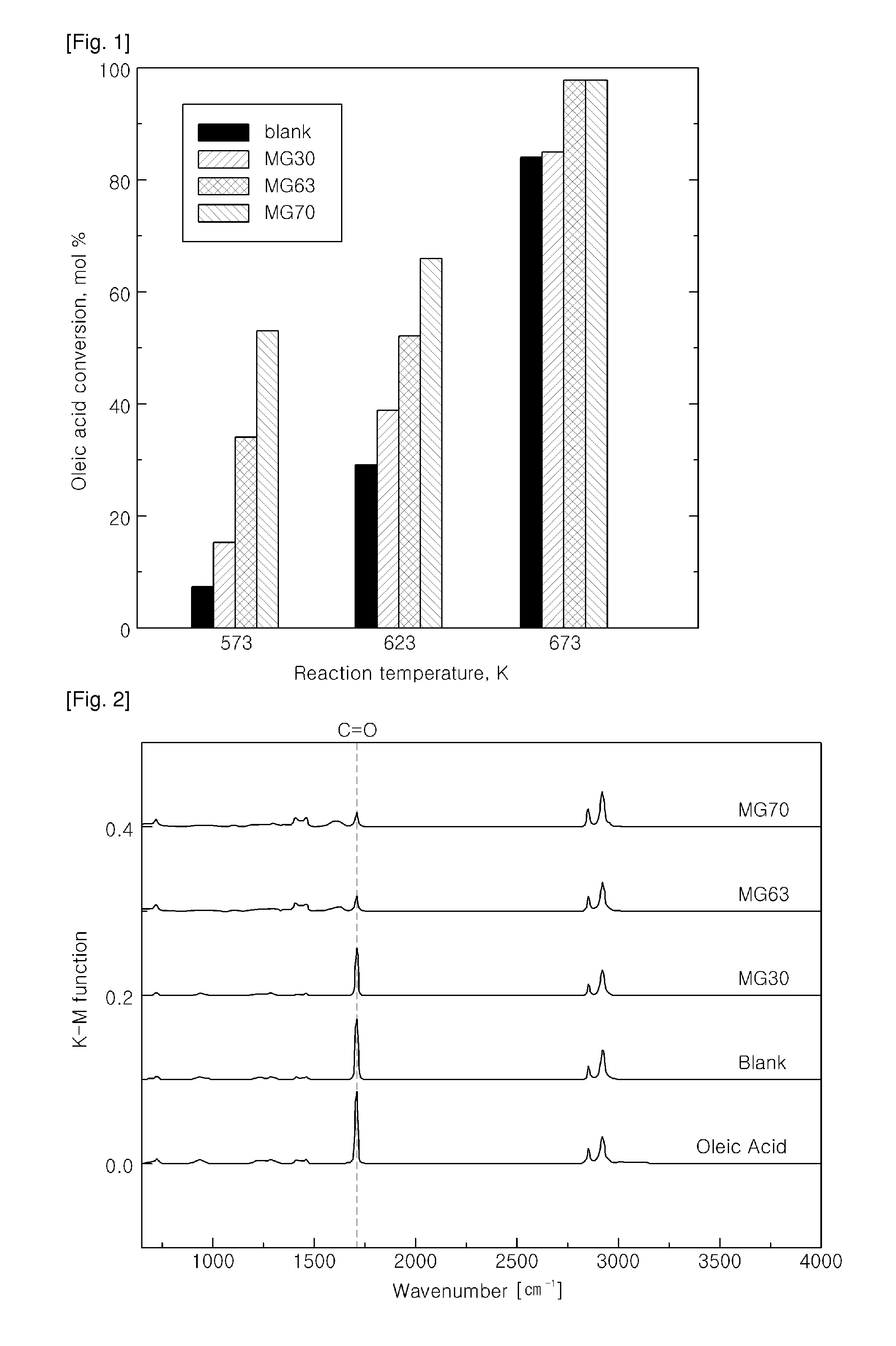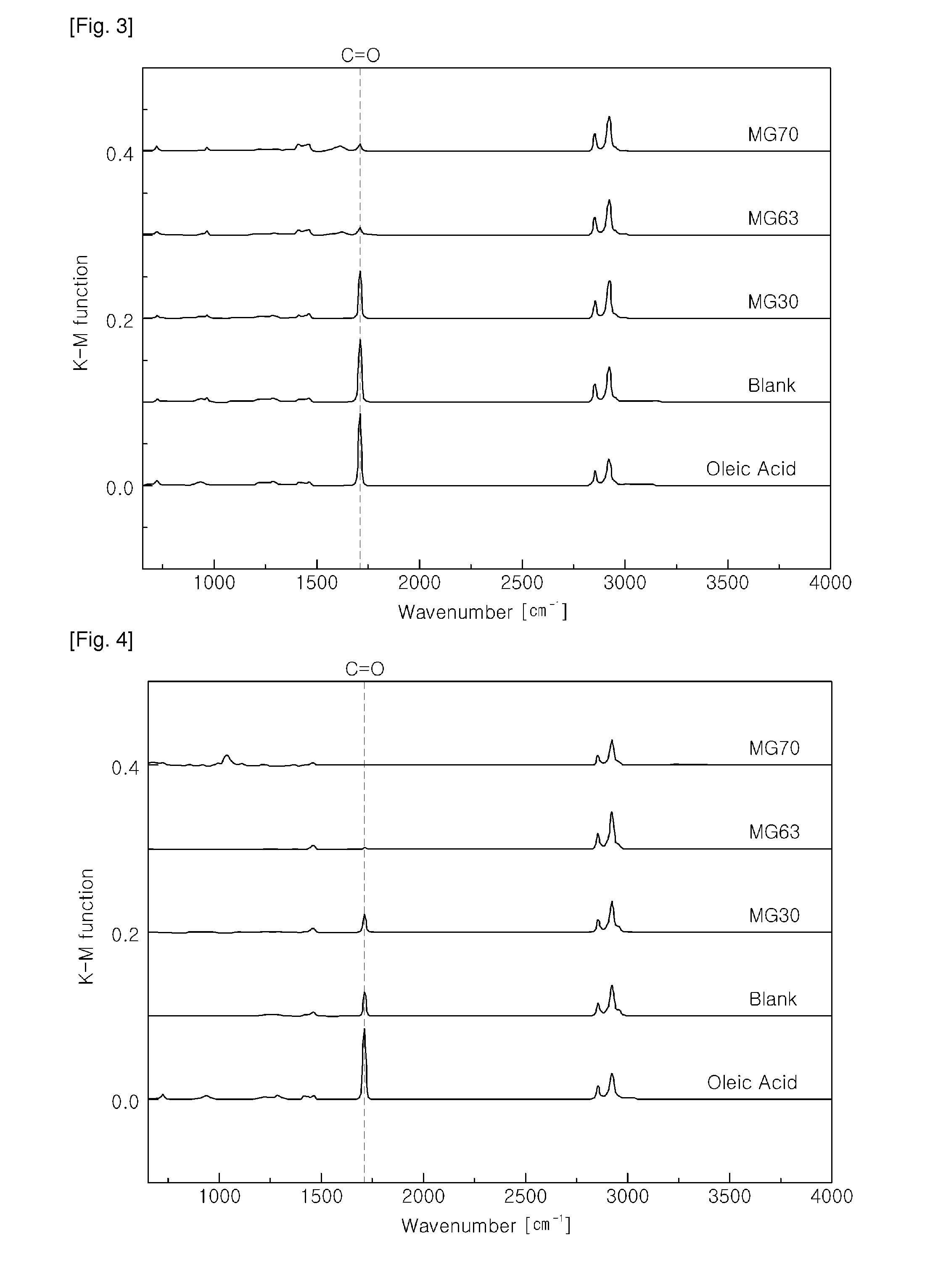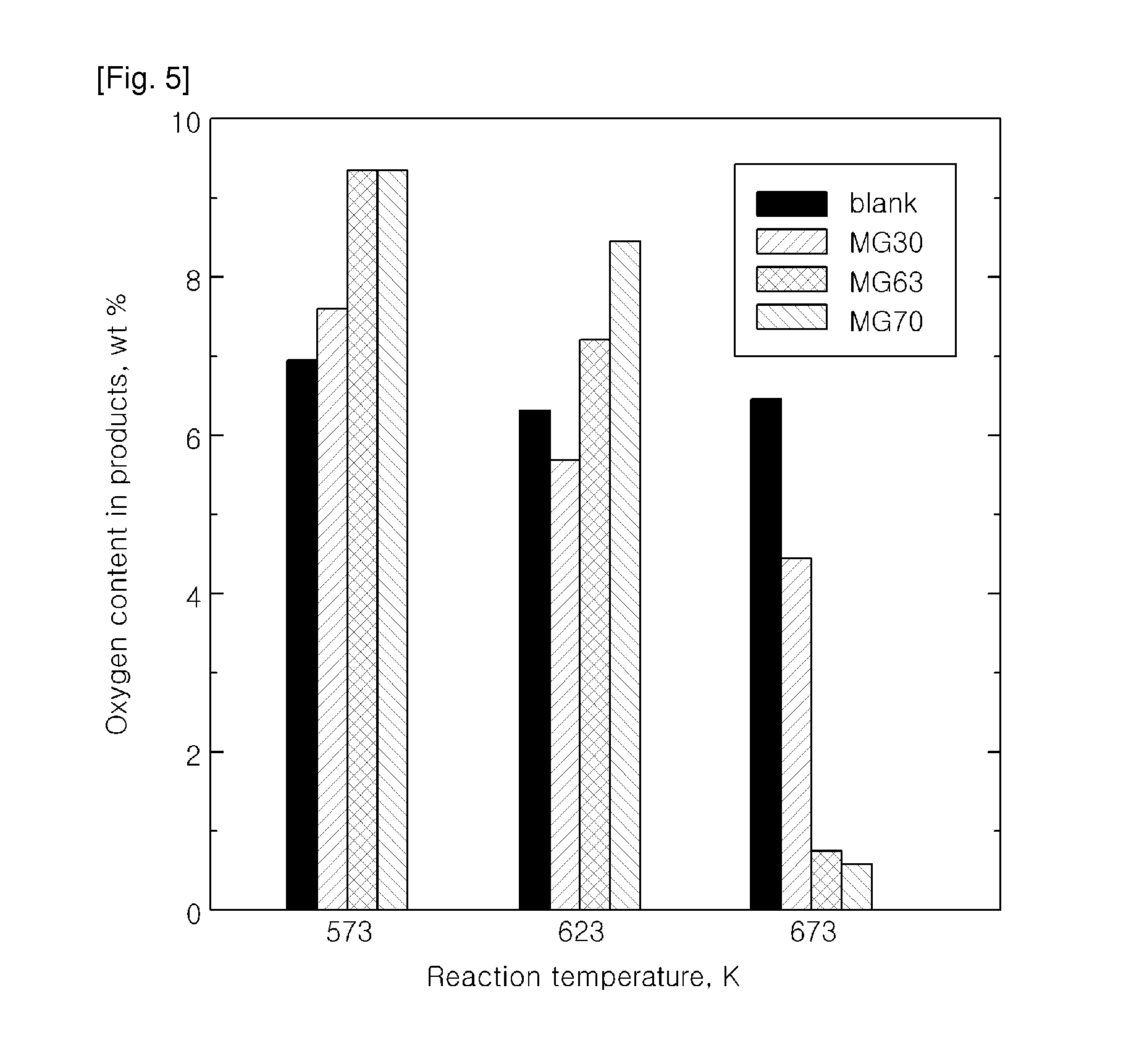Method for making hydrocarbons by using a lipid derived from a biological organisim and hydrotalcite
a biological organism and hydrotalcite technology, applied in the field of hydrocarbon production, can solve the problems of large amount of hydrogen used, increased operation costs and equipment costs, and high and achieve the effect of reducing operation costs and equipment costs
- Summary
- Abstract
- Description
- Claims
- Application Information
AI Technical Summary
Benefits of technology
Problems solved by technology
Method used
Image
Examples
example 1
MG30
[0036]After three high-pressure reactors were provided, 55.0 g of oleic acid and 2.75 g of MG30 (catalyst) were put into each of the high-pressure reactors, reacted at temperatures of 573 K, 623 K, and 673 K (at standard pressure) for two hours, respectively, and then filtered to remove the catalyst, thereby obtaining only a liquid reaction product.
example 2
MG63
[0037]A liquid reaction product was obtained in the same manner as in Example 1, except that MG63 was used as a catalyst.
example 3
MG70
[0038]A liquid reaction product was obtained in the same manner as in Example 1, except that MG70 was used as a catalyst.
PUM
| Property | Measurement | Unit |
|---|---|---|
| pressure | aaaaa | aaaaa |
| wt % | aaaaa | aaaaa |
| temperature | aaaaa | aaaaa |
Abstract
Description
Claims
Application Information
 Login to View More
Login to View More - R&D
- Intellectual Property
- Life Sciences
- Materials
- Tech Scout
- Unparalleled Data Quality
- Higher Quality Content
- 60% Fewer Hallucinations
Browse by: Latest US Patents, China's latest patents, Technical Efficacy Thesaurus, Application Domain, Technology Topic, Popular Technical Reports.
© 2025 PatSnap. All rights reserved.Legal|Privacy policy|Modern Slavery Act Transparency Statement|Sitemap|About US| Contact US: help@patsnap.com



